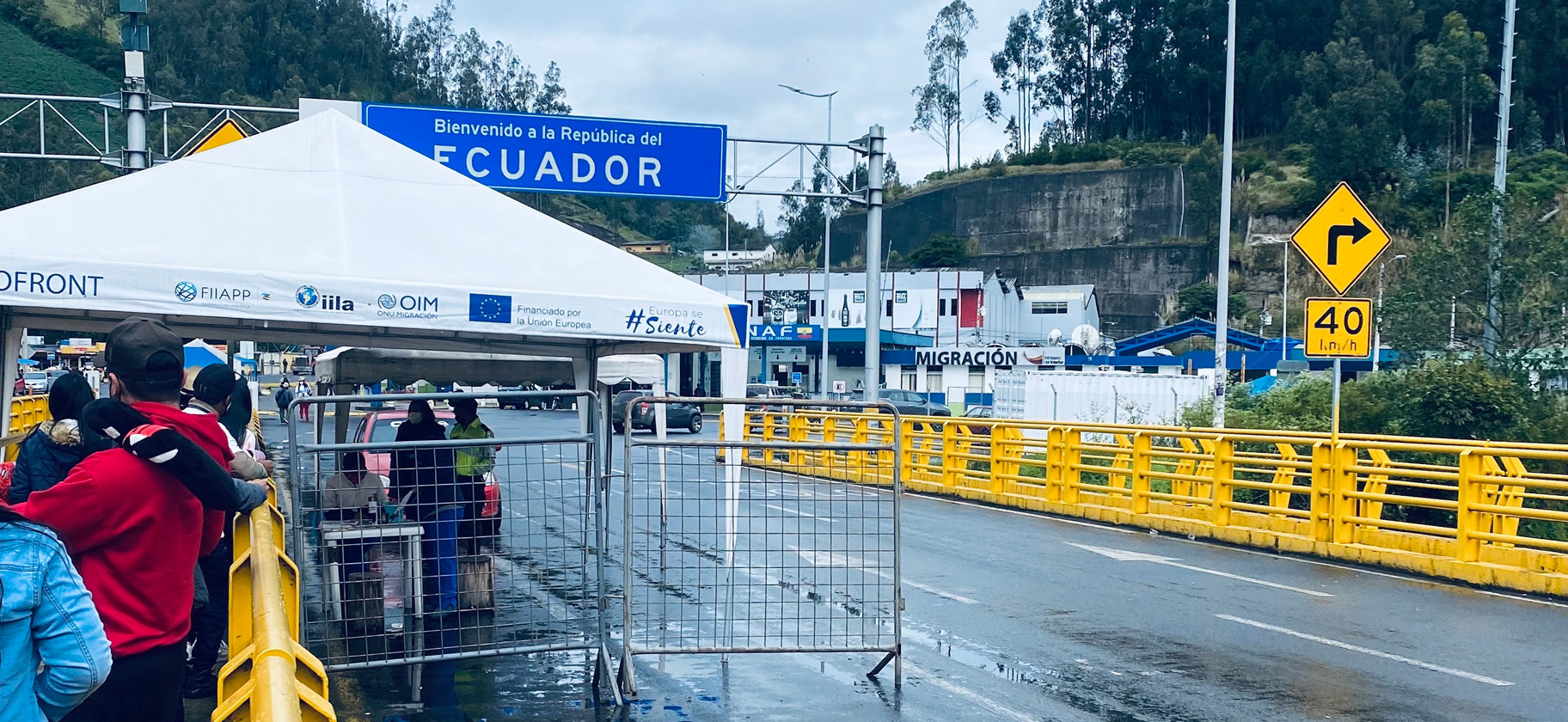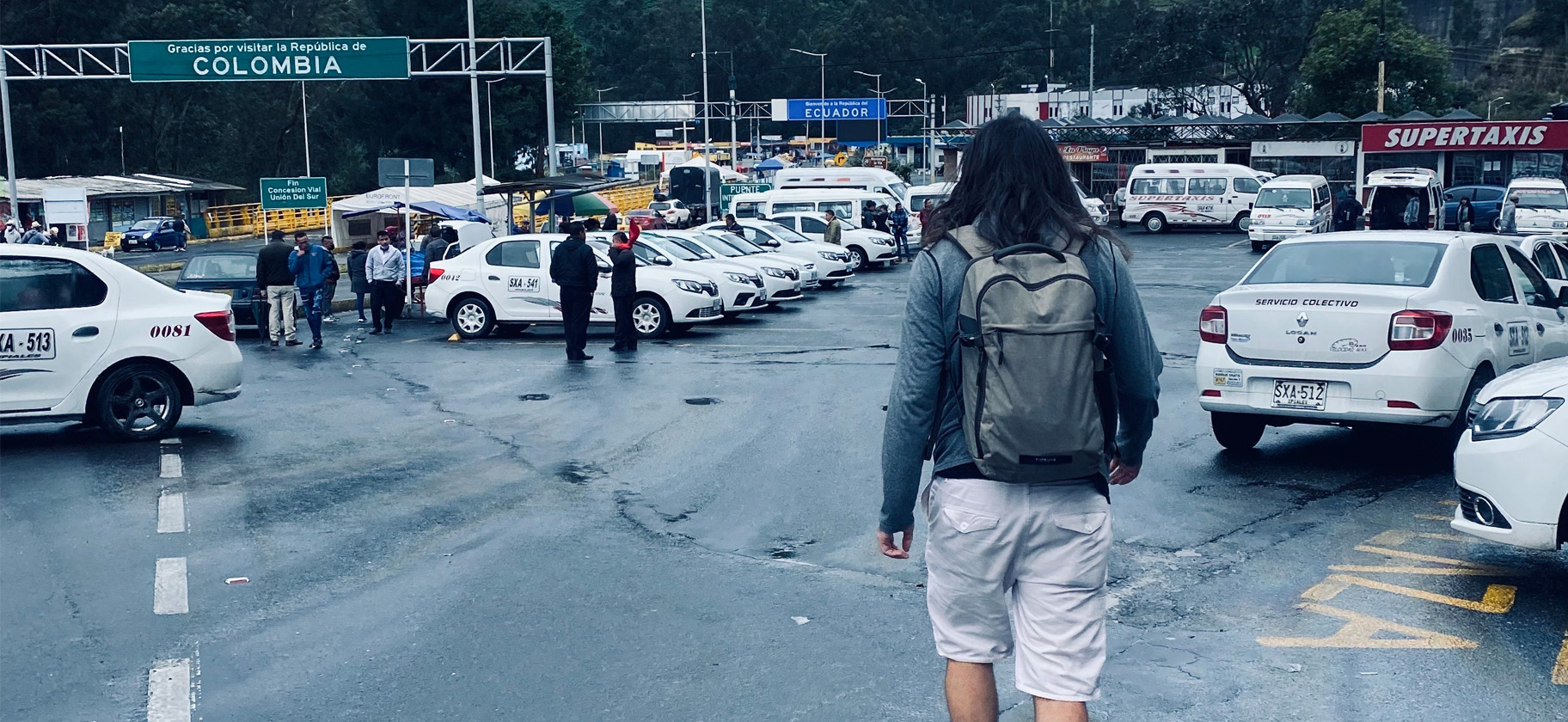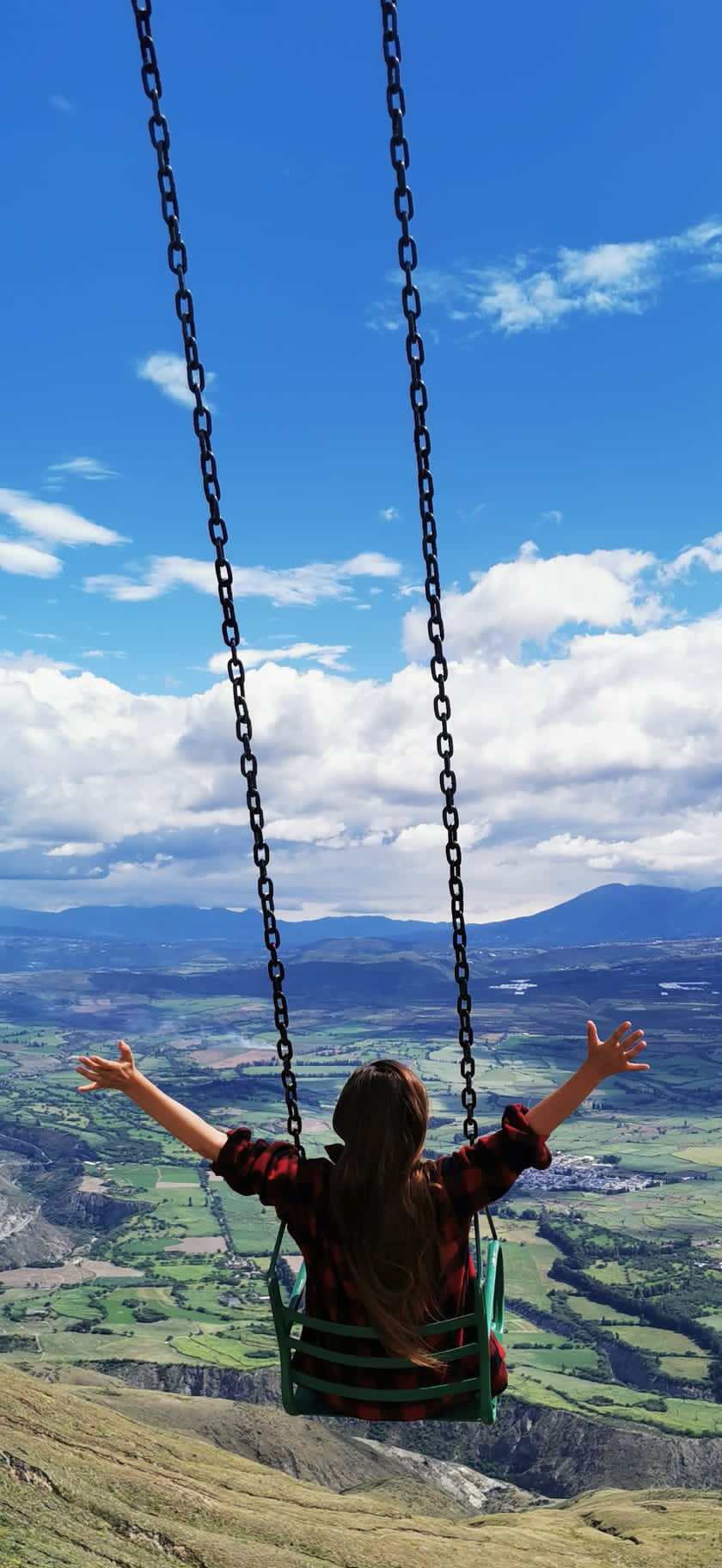Same Old Brand New

My stomach is tight but my nerve is steady. I inspect beneath the beds to make sure that no chargers and no cords have been left behind. All of the toiletries and cosmetics that we installed in the bathroom have been packed away and the room, our home for no more than a night or two, has been stripped bare leaving no chance of forgetting but a single item of what we call ours. This is the day that was so long in coming but now it is time to see it through.

When we left Cartagena, we never imagined it would have taken as long as it did to travel the length of Colombia to the southern border. We felt as though we had all the time in the world and began by driving out of our way to the northeast to Barranquilla and on to the region near Santa Marta and Tayrona National Park where we experienced our first wakeup call that perhaps we were in for more than we had bargained for when Tranquilo’s fuel pump failed. Our GPS failed and sent us to Magangué 50 km in the wrong direction from our destination of Mompox ending in a soul-crushing 8-hour journey. We got our bearings and travelled due south through Giron and the area around San Gil before stopping briefly in Villa de Leyva before arriving in the capital where I was stricken with crippling back pain that kept me bent over like a question mark for a week. April came upon us suddenly, and a month before our entry visas expired, we felt that time was still on our side. We drove out of our way again to the northwest toward Medellin stopping in Doradal when Tranquilo broke down a second time. After the repair, we found some respite in Guatapé before arriving in Medellin which we used as a base to recenter ourselves after so much car trouble and extended our stay to a full week. We had Tranquilo serviced by a reputable mechanic and a personal friend of our network of acquaintances who reassured us that we should be good to drive from here all the way to southern Argentina. The moment we left Jericó for Pereira, hoping to enjoy a relaxing stay in the fincas of the coffee axis, the compressor on Tranquilo’s air conditioner failed. We could not catch a break as all of Tranquilo’s vulnerabilities were exposed – such were the results of the pandemic and her not having been driven for a full year. Tranquilo’s fragility kept us from feeling completely free and, when we left Cali after Jorge helped us to get her air conditioner repaired, something about Tranquilo still did not feel right. There were no easy drives in Colombia and there was always something to slow you down. Whether it was lines of trucks lumbering up the mountains, roadwork outside the pueblas, car trouble, the mounting costs of tolls that seemed to be stationed 10 kilometres or less apart, or protests over clean drinking water that shut down highways altogether, there was always something that added hours and unease to every journey. Whenever ill fortune would find us we had the good fortune to stumble upon the person who could help us.
Although the months we spent in Colombia were largely spent driving, however slowly, along its highways or fretting over Tranquilo’s condition, in the precious moments we cobbled together to free ourselves from those apprehensions we learned something about Colombia. There were sun-drenched mornings accompanied by the finest coffee and sublime sunsets enjoyed slowly sipping a limonada de coco or dram of aguardiente. We sampled arepas, chicharron, sancocho, and mote de queso, and enjoyed almuerzos from the tops of jungle forests that overlooked misty valleys. We relished in the rare opportunities to indulge in delights that were out of the ordinary and, in the villages of Santander and Boyaca, we sampled coca beer, hormigas culonas, chicha de jora, obleas, and chocolate beer. We looked out over sprawling Bogota from Montserrate and climbed to the top of Piedra de Peñol. We swam in the Caribbean Sea in Cartagena and in the lakes and rivers surrounding Guatapé. We witnessed Atlético Nacional’s 2-0 victory over bitter rivals América de Cali at the Atanasio Girardot stadium in Medellin on their way to the title. We found quiet moments in old catholic cathedrals and visited Las Lajas where Colombia and Ecuador were already beginning to blend together. We walked the cobbled streets and explored the old Spanish colonial plazas of towns like Mompox, Villa de Leyva, and Popayan, hoping to leave no stone unturned. By the time we arrived in Ipiales with just a couple of days of our visas to spare and it became clear that we were going to make it to Ecuador, even after three full months, Colombia somehow still felt unseen.
There was nothing between Colombia and Ecuador but an imaginary line along a river that important people had decided upon many years ago that that was where the boundary between the two countries should be. There was no evidence yet that our fortunes would change in Ecuador but, because of that arbitrary boundary, I was convinced that they would. Before I could enjoy the fruits of that changing fortune I first had to negotiate our departure from Colombia.
There is nothing to stop you from just driving through completely unchecked. This is presumably to facilitate locals who often travel between the two border cities of Ipiales and Tulcan. There would be further border crossings along the way and the most precious thing to have is the stamp so we were not going beyond the checkpoint without it. Which office to visit and in which order was unclear but the moneychangers that lingered by the offices were helpful in pointing out where to go and who to talk to.
With the pandemic still in full effect, we were required to fill out check-mig forms (the Colombian contact tracing system) before we could receive an exit stamp. Before visiting Ecuadoran immigration offices, we needed to queue by a tent to show proof of vaccination and fill out a health report in order to receive a small slip of paper to present to the agent at immigration. We stumbled from office to office, being sent back and forth needing one slip of paper or piece of proof to obtain the next, in a series of formalities that took more than three hours. To enter Ecuador, there were visits to immigration and customs and an office to register Tranquilo. The Ecuadoran transport agency issues forms for automobiles that enter the country specifically for the purposes of tourism and their registration is connected to the length of stay permitted by the title holder. Once this last of the bureaucratic hurdles was completed, Highway 25, which we had driven all the way from Cali, the same road just under a new jurisdiction, became Highway E35, and we were on our way.
For the first 50 kilometres or so, life felt more or less the same. There were the usual police checkpoints as there had been in Colombia, tolls now paid in dollars rather than pesos, gas stations and roadside restaurants, and, as always, there was the highway. A toll booth agent outside of the town of Bolivar told us to turn back and take an alternate route from the one that was most direct and suggested by Google Maps. There was a protest taking place in a small village that had barricaded the road causing chaos along the highway and backing up traffic. After the barricade along Highway 25 outside of Estrecho Patia we considered ourselves veterans of these kinds of disruptions. We got a tip of an alternate route that motorists were sharing travelling from Bolivar along a local highway to Mira and then through the rural routes to La Concepcion, to Salinas, and then back onto Highway 35 at the far end of the blockade.
 The drive from Ipiales to Otavalo can take as little as three hours. Negotiating the border held us up and the alternate route around the barricade meant that our journey to Otavalo took nearly eight hours. Arriving in Otavalo, we drove up to a hotel where I negotiated the room rate and security for Tranquilo. Dennis at the hotel reception could not have been more than 18 years old. He had a big smile and was eager to help us out. By now, Jenia and I were not the same people as we had been in Colombia. The room cost $25 which included parking at a secure lot. An image lingers in the mind of a hotel room that can be rented for a rate that low but, for us at that moment, it seemed to sparkle. No two-hundred-kilometre journey had ever felt like so massive of a step. The clock had been reset and, instead of watching the days tick away, we both had a brand new set of 90 to play with.
The drive from Ipiales to Otavalo can take as little as three hours. Negotiating the border held us up and the alternate route around the barricade meant that our journey to Otavalo took nearly eight hours. Arriving in Otavalo, we drove up to a hotel where I negotiated the room rate and security for Tranquilo. Dennis at the hotel reception could not have been more than 18 years old. He had a big smile and was eager to help us out. By now, Jenia and I were not the same people as we had been in Colombia. The room cost $25 which included parking at a secure lot. An image lingers in the mind of a hotel room that can be rented for a rate that low but, for us at that moment, it seemed to sparkle. No two-hundred-kilometre journey had ever felt like so massive of a step. The clock had been reset and, instead of watching the days tick away, we both had a brand new set of 90 to play with.
Something magical happened on that drive to Otavalo. Our new surroundings gave us a new attitude. The road beneath Tranquilo felt smoother. If there was ever construction, we breezed right through. If there was a truck moving slowly, the opportunity to pass came with my barely needing to touch the brake pedal. Rays from the sun hit the Earth from a different angle cutting through the windshield and twinkling off of our teeth from our unshakable grins. The hills along the mountainsides changed from the wild uncut jungles of Colombia to the quilt-like checkered pattern of Ecuador’s rich pastoral landscape and suddenly it seemed we could see further to the horizon than we ever had.